Monday, May 4, 2009
Ice Houses Along Penobscot Not Forgotten, by Howard F. Kenney
Ice Making
In our recollection of industries which once played a part in the history of Bangor-Brewer, we cannot overlook the ice industry. Reaching its peak in the late 1800s, the ice harvest was one of the major industries in Brewer. Records show that when this business was at its peak, in the more prosperous years, a harvest of 300,000 tons was taken from the river.
Ice houses lined the river from the “ferry place” to the Narrows. On the Brewer side were: a small one just above the old bridge, one which was located at the site of Smith’s Planing Mill, the E. and J.K. Stetson ice house near the ferry boat slip; the Getchell Brothers and the Hill and Stanford houses near the site of the old Dirigo Mill (formerly O. Rolnick & Son site, since torn down); the American Ice Company houses near the old eastern Ball park; the Sargent Lumber Company ice house near the Orrington Ice Company; and the Arctic and American houses near the narrows of the river.
Dan Sargent was a pioneer in the ice harvesting business. The largest of the houses harvested from 25,000 to 30,000 tons of ice during the winter. In the years when the Hudson River [New York] produced a poor crop of ice, there was such a demand for ice from the Penobscot River that local ice companies also harvested from Green Lake and Phillips. The many saw mills along the river furnished sawdust, which made excellent packing for the ice in transit to prevent its melting.
Getchell Brothers first appeared in the records in 1900, although it was established in 1888 by Fred and J. Calvin Getchell. It had a Bangor location at 17 State St. and a Brewer location at 101 Wilson St. By 1920 Getchell Brothers reigned supreme and alone. In those days, the ice cart, drawn by two horses, plodded casually along the street, the cart’s bright yellow painted sides calling attention to its wares.
The cart stopped at houses of those people who were fortunate enough to have a refrigerator, and an ‘ice card” in the window. The iceman would stop, haul a large cake of ice to the back of his cart, chop off the desired amount, swing it over his black-rubber covered back, and stride off for the customer’s house. The customers had a card which had four corners, one for each amount: 25, 50, 75 and 100. The corner at the top was the number of pounds desired, when placed in the window. There were always several children hovering at the back of the cart, ready to pick up the pieces of ice that were lost in the process of chopping---a delightful treat on a hot summer day.
During the summers of their high school days, in the 1920s, many high school students used to work on Getchell’s ice wagons, delivering up to 100 pounds of ice per load on their backs. This work served a two-fold purpose. First, it helped them build up their bank accounts. Secondly, the nature of this rugged labor helped to build up their muscles and condition them for fall football encounters.
More on Ice Making
We will begin our story around 1879, with a tour of D. Sargent & Sons ice-making plant, the most accessible. We begin by taking the electric car to their plant, which is opposite the American Ice Company, on the Bangor side of the river.While on our way to the ice house, we fall in the company of the Hon. H.P. Sargent, senior partner of the firm, who takes us and pilots us to the foot of the elevator and shows the manner in which the ice cakes are taken from the eater and carried, at the rate of 25 to 30 cakes per minute, up the elevator to various runs to the houses. Following on the side of the canal, we go into the head of the ice field where we meet field foreman Frank Young, for much information about work and statistics.
Harvesting Ice
The first thing to do in the ice industry is to find your ice. Upon freezing over of the river the owners of the various ice plants stake out their several fields and if snow falls, as soon as the ice is sufficiently strong, men and horses remove the snow with long scrapers and bring it ashore. This is done for two reasons: first that the cold may come in contact with the ice and freeze it more quickly and to a greater thickness, and second, that its weight may not sink the ice and cause the water to flow over it, forming slush and snow ice. It is the latter condition which has caused the travelling on upper Moosehead Lake to be so bad in the winter. Ordinarily the ice is ready to harvest by the first of January and the season covers a total of a month to six weeks, so that our ice men should have the ice houses filled.
How it is done
When the ice is ready to be cut, it is run in a line with a hand marker, an ice plow on a small scale, a large marker is used, a gauge, running in the channel first made, making a cut 32 inches from the first. In this manner the whole field is marked out as far as wanted. Next, after the marker, follows the plow drawn by two horses, which adds about three inches in depth to the three inches already made. This in turn is followed by another run which makes the cut from nine to 12 inches in depth according to the thickness of the ice. The same thing is done at right angles to the first line. The difference is that the second lines are 22 inches apart, making an oblong cake 32 by 22 inches and of such of clear ice, not less than 12 inches, as the ice will make.
If the cutting of commences, as it did at Sargent’s, at some distance from the foot of the elevator, a 42-inch wide canal is cut out to the field and through this the ice is pushed by men with pickaroons as rapidly as it can be taken up by the elevator. The elevator carries about one cake to every eight feet in length of the circular chain. The elevator can be arranged, as was that of the American Ice Company, to carry two cakes together instead of one and this greatly increases the daily output, or perhaps input. After a sufficient quantity of ice has been removed to make [a] sea roon [sic?] [canal], the field of ice is divided into large flows, containing some 400 cakes, or 50 tons of ice, by separating it at the ends from the mass by the use of peculiar double ice-chisel.
Running the elevators
These ice floes are then floated down to a wide channel where they are divided, as may perhaps be best expressed, into a dozen cakes of ice side by side, and as these are run through the narrow canal first mentioned, men with chisels divide the cakes from each other at the same time that the other men are pushing them along to the elevator when they arrive, one close to the other, to be taken up by the lugs of the elevator and carried up to such an elevator for the tour of inspection. As each cake of ice enters the elevator it passes under a knife, the blade of which resembles the cutter of a mowing machine, which removes the snow ice and cuts the cakes to a uniform depth of 12 inches---at the present thickness of the ice---that being the minimum thickness allowed.
Runs, constructed of hard wood bars stretching lengthwise with sides to prevent the ice from coming off the track, are extended into the houses at various heights. Commencing with the lower runs and continuing to the upper, the cakes, are urged on their slightly descending course by a little army of men nimbly using their picks. They are sluiced into the houses and upon the other runs by which they are conveyed all over the houses. Here the crystal cakes are packed side by side, with a little space between to prevent them from freezing into a solid mass.
It is lively work and each part of the operation goes on simultaneously, the force of men being so divided that nobody has to wait on another. It may well be to say, for the benefit of those not familiar with the business, that after the houses are filled and the entrances closed up and the space between the inner and outer layers filled with sawdust, a coating or dunnaging of hay is spread over the ice.
The first authentic account of ice being shipped from Maine, as stated in the report of Commissioner of Industrial and Labor Statistics, was in 1826, when the brig Orion of Gardiner, which had lain frozen in the Kennebec River during the winter, was loaded with the floating ice when the river broke up in the spring. The cargo was taken to Baltimore and sold for the sum of $700. In that year a house of 1,500 tons capacity was erected on Trott’s Point, Hallowell. It was filled, and, on the following summer, its contents was shipped to Southern and West India ports. The speculation proved unprofitable, and the business was abandoned after some years. In 1831 the Tudor Ice Company of Boston refilled this building and erected another in Gardiner, housing 3,000 tons during the season.
In 1849 Mr. W.H. Lawrence of Gardiner constructed an ice plow with one cutting tooth and guides, which proved of great benefit, and was the original of the improved and finely constructed plows now in use. Indeed, in every part of the work, the progress has been great, and improved machinery and tools, and experience in the work have reduced the cost of harvesting to a minimum by enabling the largest amount to be handled in the shortest period of time.
Ten Years Ice Harvest (Tons) on the Penobscot River
Year
1881 81,000
1882 146,000
1883 112,000
1884 58,500
1885 104,500
1886 176,000
1887 151,000
1888 200,000
1890 506,300
Then and Now
In earlier times, whip saws cut out the cakes, two feet by four, and men slowly dragged them up an incline to the houses by oxen. Now the plow rapidly cuts the cakes 22 X 32 inches, and these are taken by steam elevator into the houses at the rate of 25 cakes to 50 a minute. The American Ice Company, in this city, putting it in at the latter rate, produced an average of 2,500 tons a day. There was but a moderate increase of production on the Kennebec up to 1860; the business in Maine being confined to that river up to that time. Quite a boom was then had, owing to the failure of the crop in the South, and new and more or extensive and permanent plants were established. Rapid progress was made and a flourishing business done for five to six years, following, and since that time the business has been active, and an immense business has been done.
On the Penobscot
The first ice plant on the Penobscot was prior to 1871, at Rockport, when the Carltons and Rockport Ice Co. went into business. In that year H.E. Pierce, of Belfast, also entered. The first housing for shipment from Bangor below the dam, was 1879 and 1880, when D. Sargent & Sons, Rollins & Arey, and E. & J.K. Stetson were among the first to lead off, and they have continued.
Loading the Vessels
Shipments usually commence with our regular dealers as soon as the ice has left the river. The new crop is desired by the customers, and the early cargoes are hurried off. The handling of ice yearly improves. In our early history, 75 tons was a good day’s work. During the past summer, several of the crews have handled 1,000 tons in 10 hours. The ice is taken from the ice house now in a uniform manner of working, with runs, chisels, and starting bars. About three layers are removed together, first the top, then the middle, and then the bottom. It is carried on ice runs to the vessels mostly by hand, yet many now employ steam power, with a carrying chain to convey it. Ice tongs and ropes were employed previous to 1890, dropping the ice into holds of the vessels. In that year, M.R. Shepard & Ballard, of the Knickerbocker Ice Co., invented the automatic vessel loading machine, which is now in general use. A platform dropping two blocks is employed, making quick work, and meeting a long felt want. In early days of the industry 75 tons was considered a good day’s work.
Subscribe to:
Post Comments (Atom)

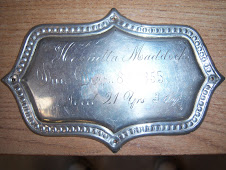
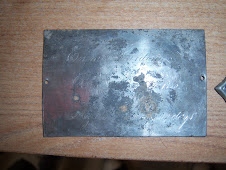





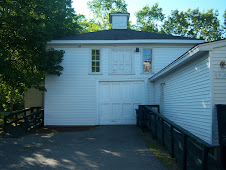





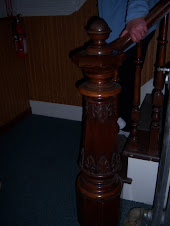



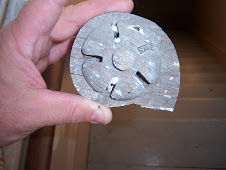







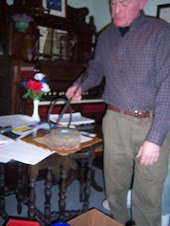



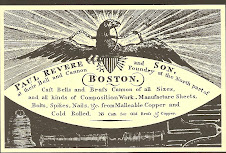



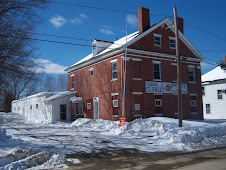

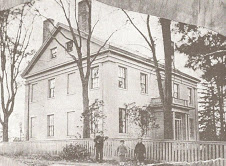


















I would like Mr. Howard Kenney to contact me via post@kingdom-search.com please.
ReplyDeleteThanks a lot!
Dirk Rensmann
I have never met Howard Kenney.I got permission and transcribed the two articles by Kenney from printed material in possession of the Brewer Historical Society for the blog I created. I will ask about Kenney at the BHA meeting which is tomorrow night, Feb.12, at 7PM at the Brewer Methodist Church.
ReplyDelete